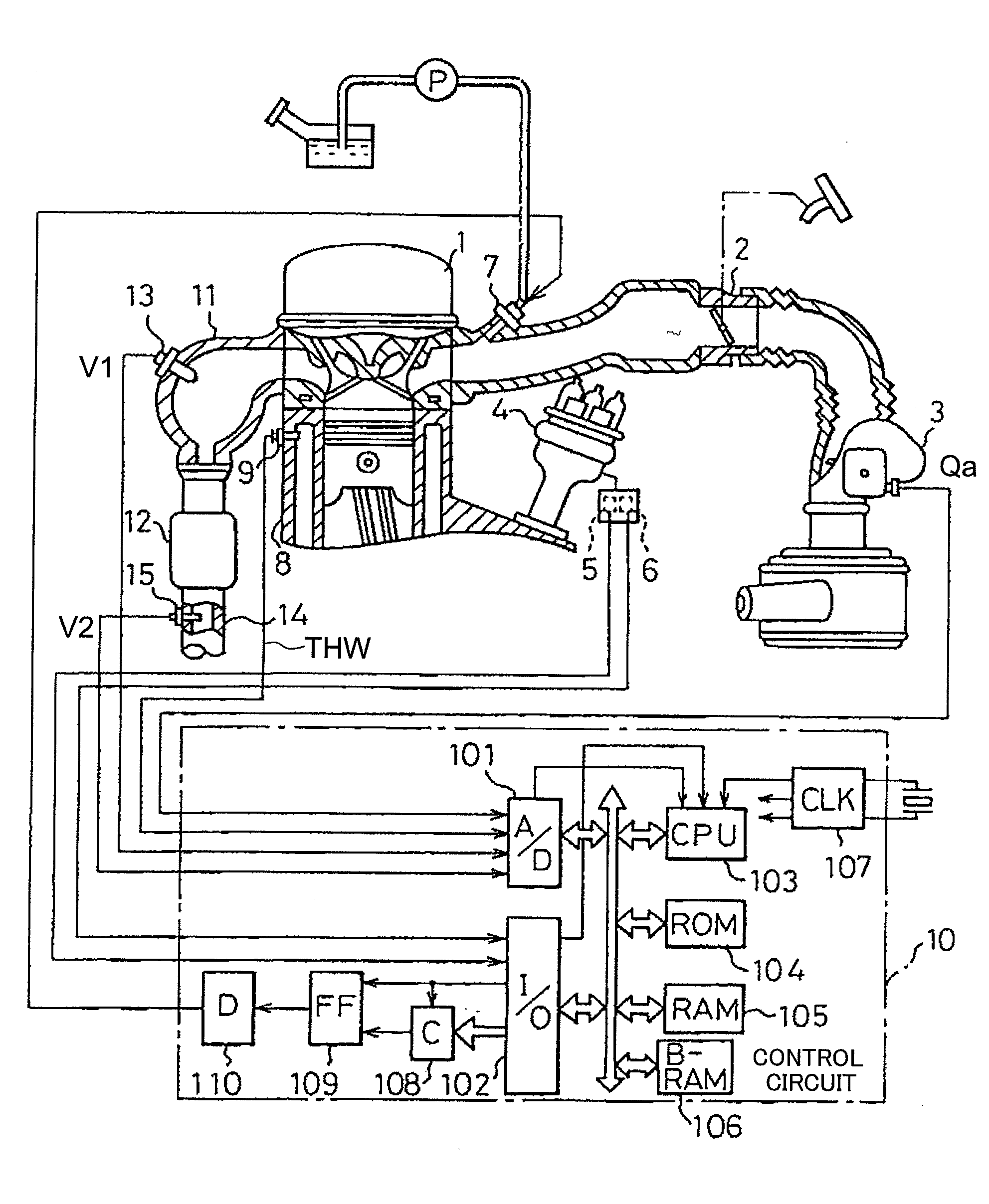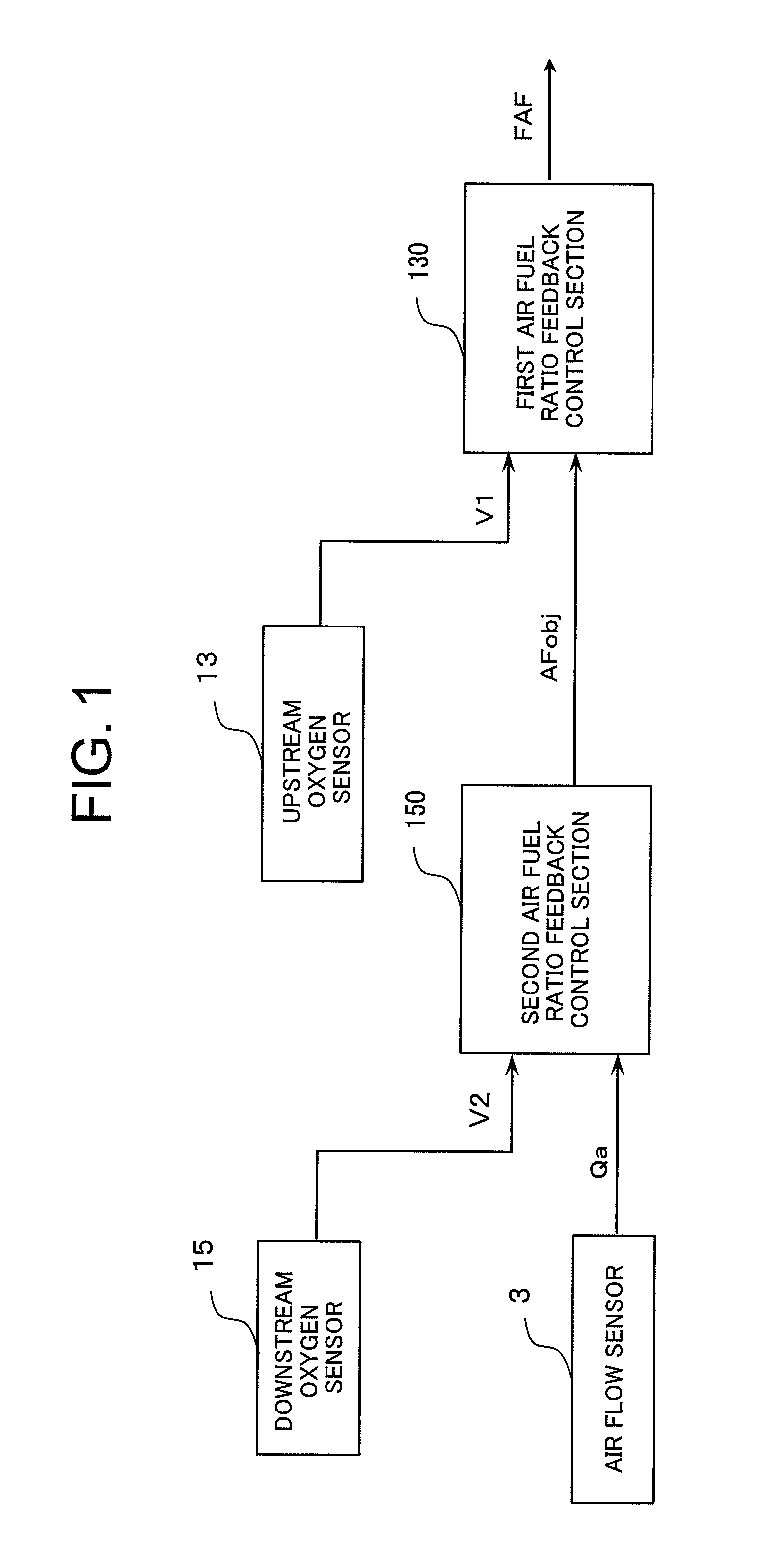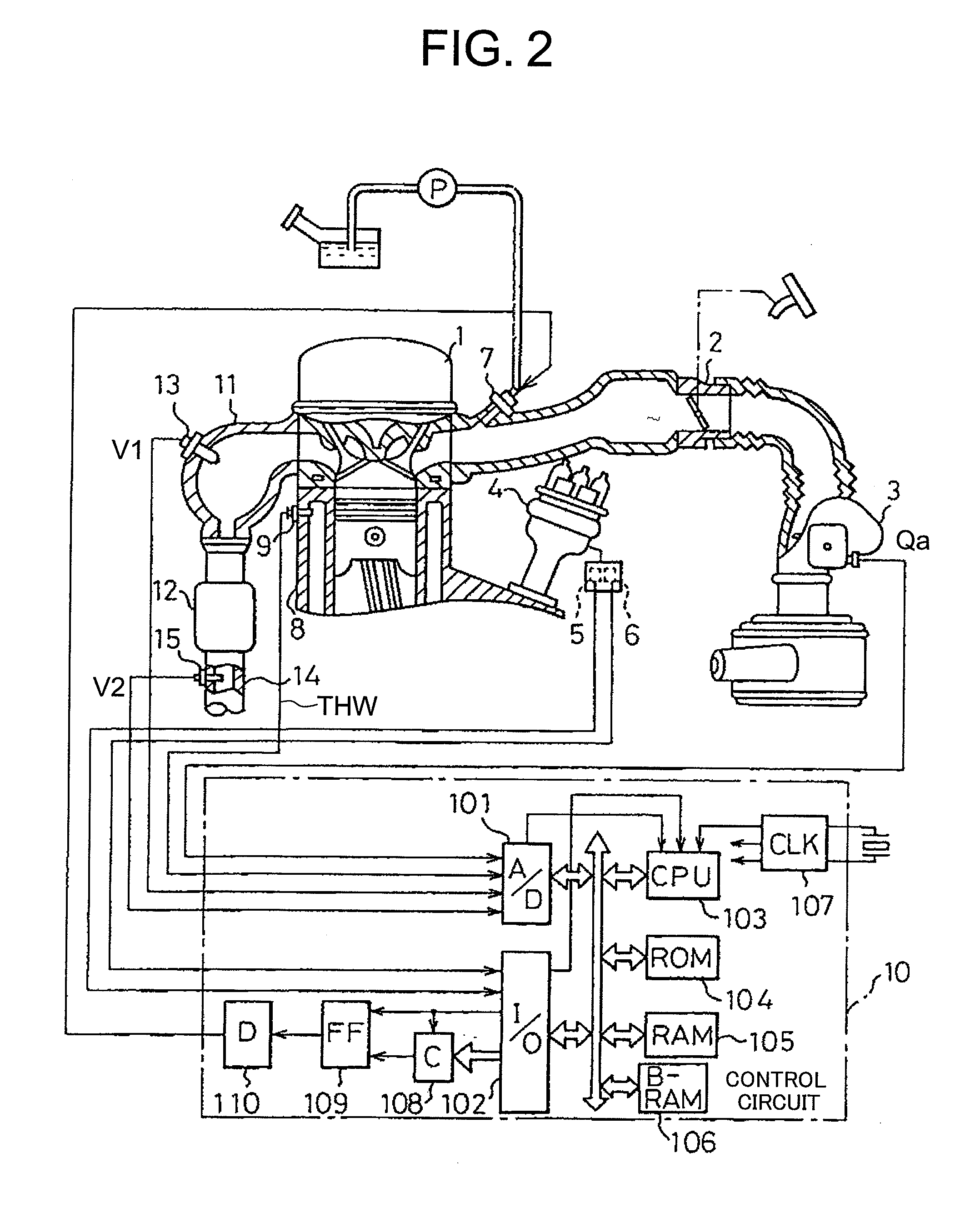Air fuel ratio control apparatus for an internal combustion engine
- Summary
- Abstract
- Description
- Claims
- Application Information
AI Technical Summary
Benefits of technology
Problems solved by technology
Method used
Image
Examples
embodiment 1
[0059]Referring to the drawings and first to FIG. 1, there is shown, in a block diagram, the construction of sentential portions of an air fuel ratio control apparatus for an internal combustion engine according to a first embodiment of the present invention.
[0060]In FIG. 1, the air fuel ratio control apparatus for an internal combustion engine includes an air flow sensor 3 for detecting an amount of intake air Qa sucked to the internal combustion engine (hereinafter also referred to as an engine), an upstream oxygen sensor 13 disposed at an upstream side of a catalyst, a downstream oxygen sensor 15 disposed at a downstream side of the catalyst, a first air fuel ratio feedback control section 130, and a second air fuel ratio feedback control section 150.
[0061]The first and second air fuel ratio feedback control sections 130, 150 are constituted by a control circuit 10 (to be described later together with FIG. 2). An output value V1 of the upstream oxygen sensor 13 is input to the fi...
embodiment 2
[0228]Although in the above-mentioned first embodiment, a linear type oxygen sensor having a linear output characteristic with respect to a change in the air fuel ratio is used as the upstream oxygen sensor 13, there may be used a λ type oxygen sensor having a binary output characteristic in which its output rapidly changes in the vicinity of the stoichiometric air fuel ratio.
[0229]FIG. 14 is a functional block diagram that shows essential portions of an air fuel ratio control apparatus for an internal combustion engine according to a second embodiment of the present invention, wherein an illustration of the construction thereof similar to that in the above-mentioned first embodiment (see FIGS. 1 and 2) is omitted and those elements corresponding to the above-mentioned ones are identified by the same symbols with “A” attached to their ends.
[0230]In FIG. 14, an upstream oxygen sensor 13A is constituted by a λ type oxygen sensor, and inputs an output value V1 to a first air fuel ratio...
PUM
 Login to View More
Login to View More Abstract
Description
Claims
Application Information
 Login to View More
Login to View More - R&D
- Intellectual Property
- Life Sciences
- Materials
- Tech Scout
- Unparalleled Data Quality
- Higher Quality Content
- 60% Fewer Hallucinations
Browse by: Latest US Patents, China's latest patents, Technical Efficacy Thesaurus, Application Domain, Technology Topic, Popular Technical Reports.
© 2025 PatSnap. All rights reserved.Legal|Privacy policy|Modern Slavery Act Transparency Statement|Sitemap|About US| Contact US: help@patsnap.com



